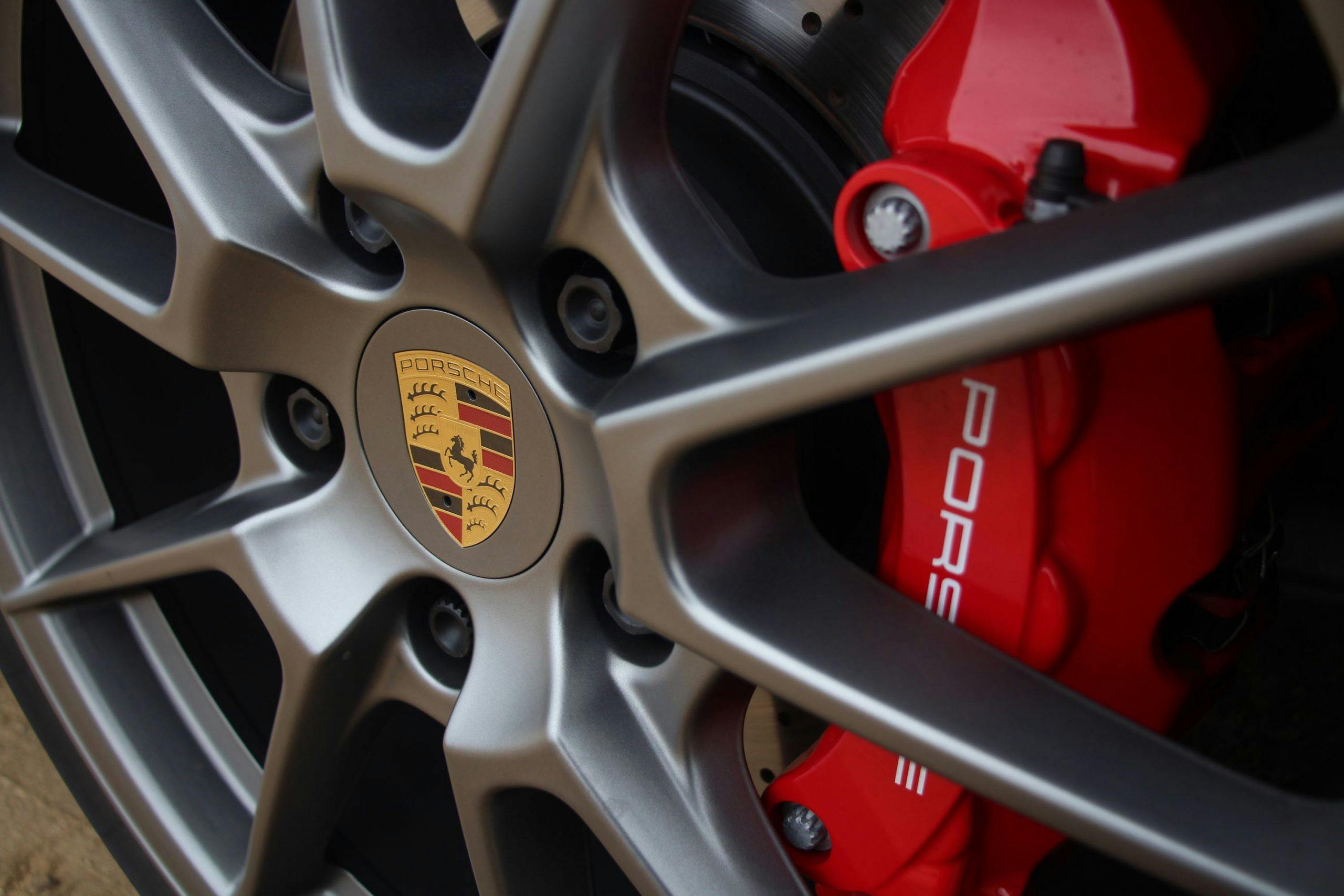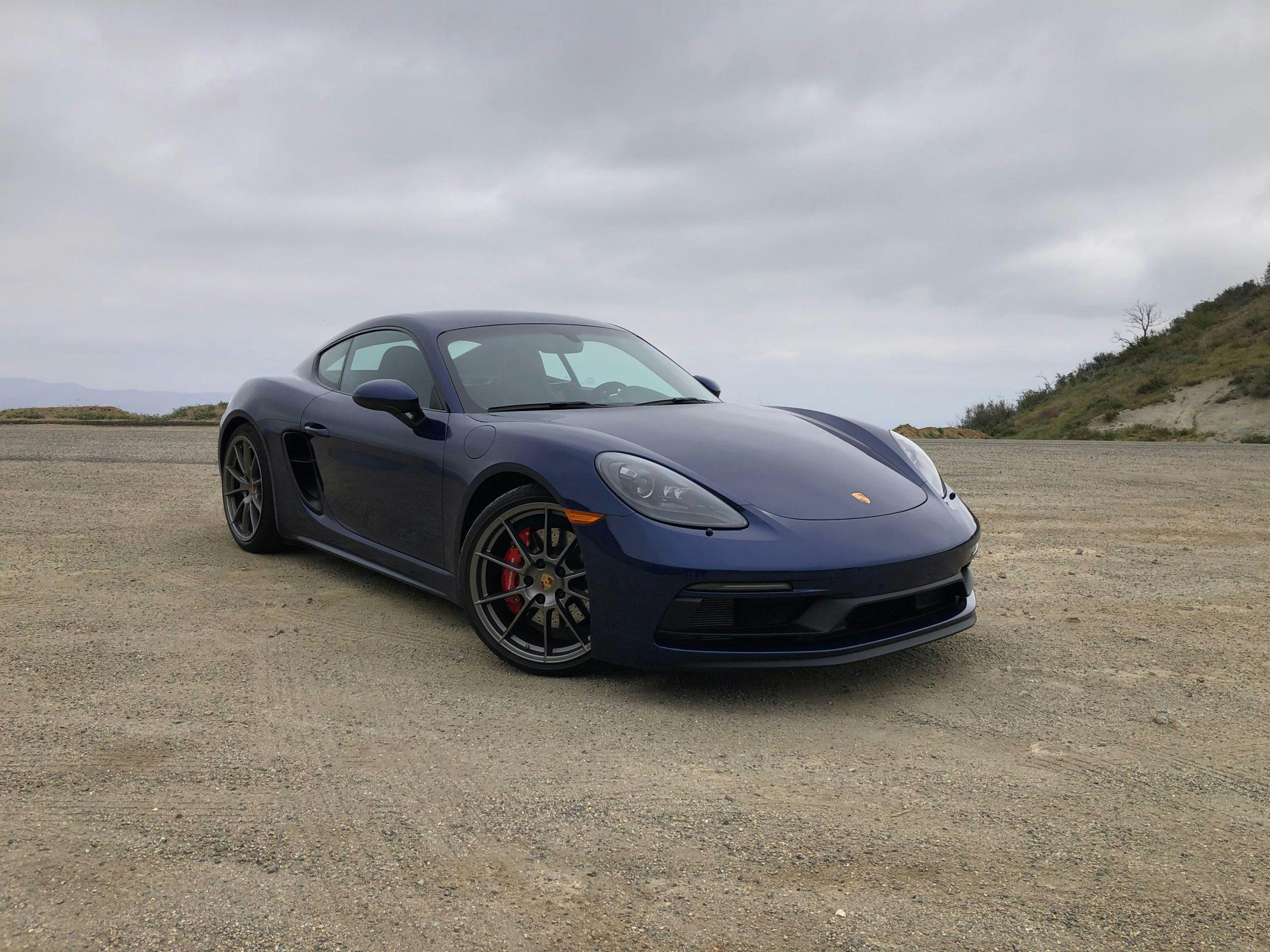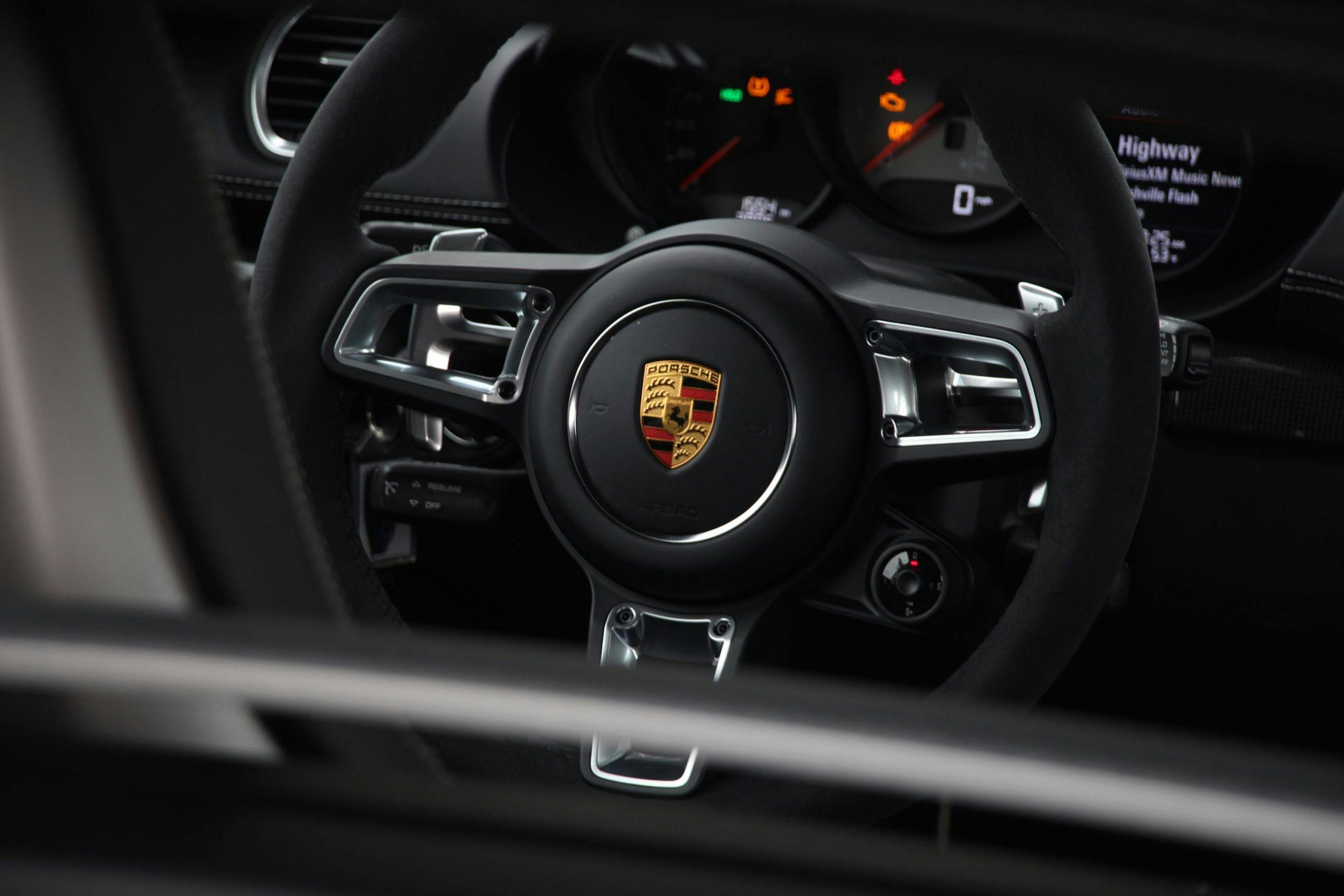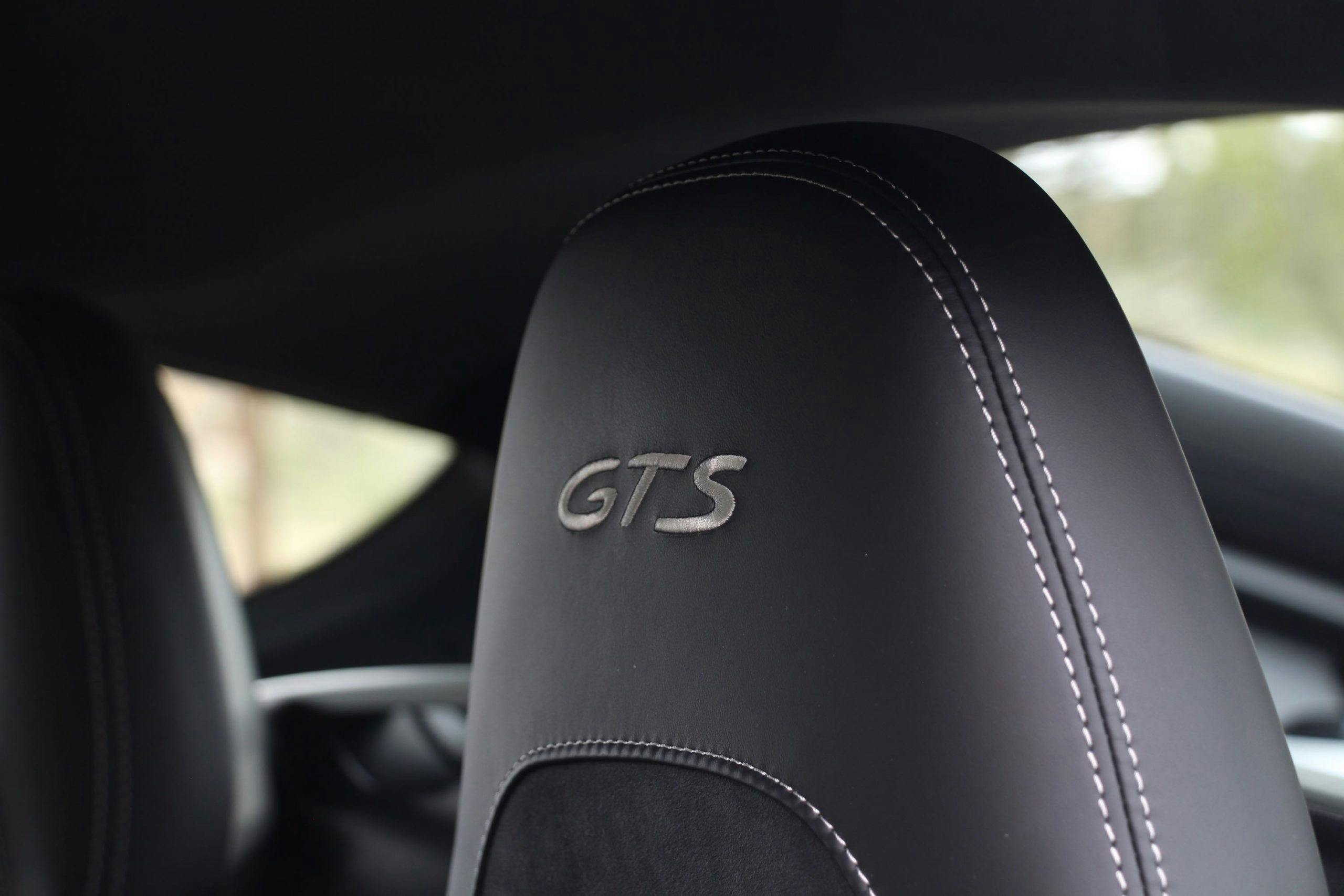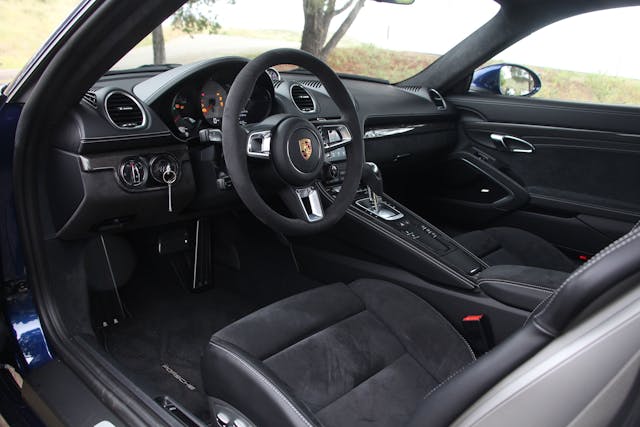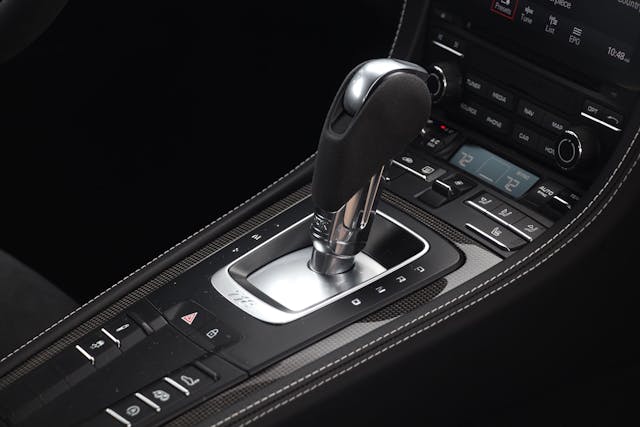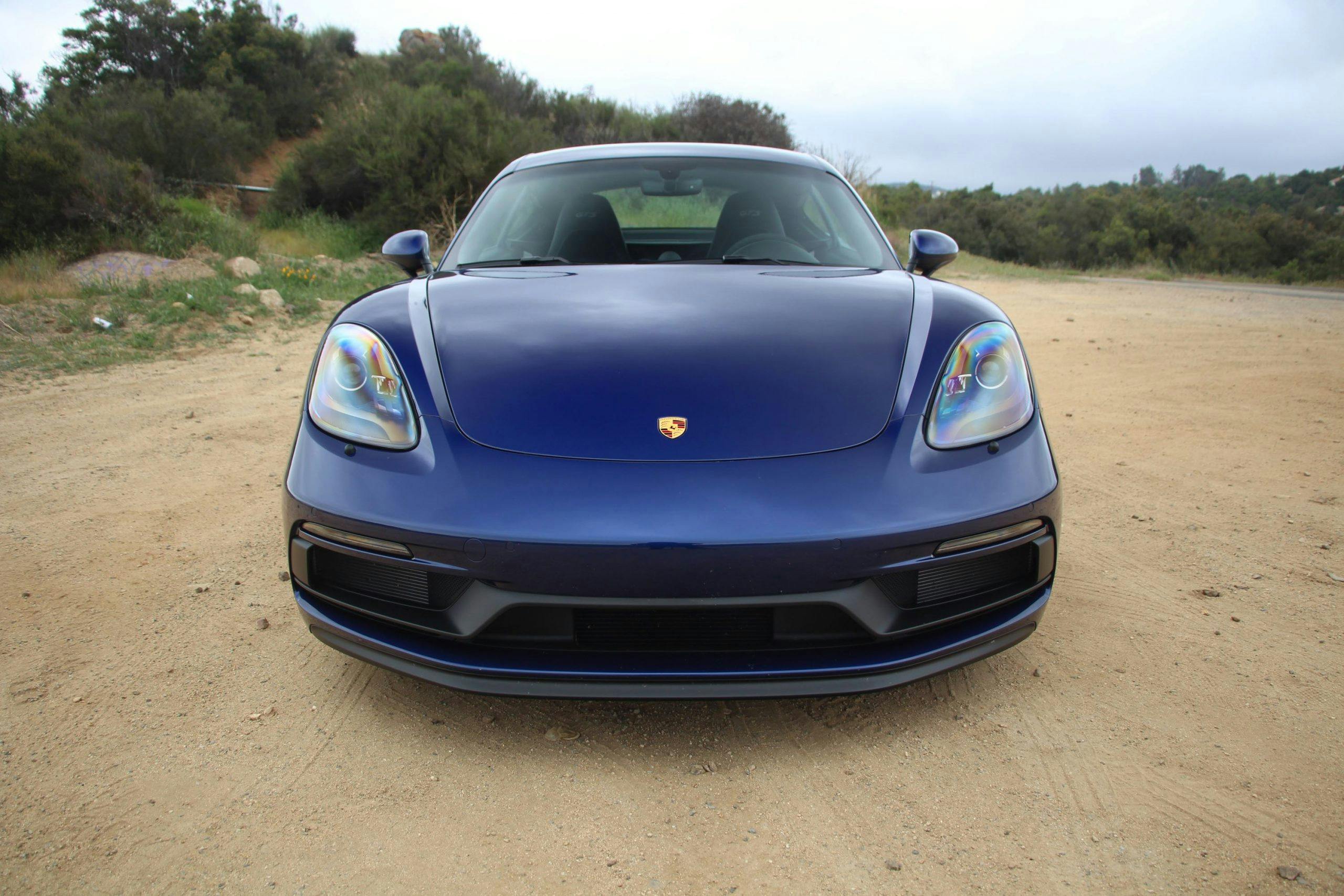Media | Articles
The GTS 4.0 is the Goldilocks choice in the 2021 Cayman lineup

When designing a vehicle, engineers work through a wide range of considerations to determine the optimal layout given a particular design brief. It’s through this process that we find crossovers with engines in the front and part-time all wheel drive systems: Both features reflect a mission to offer enhanced capability while optimizing passenger space. The rear-drive, ladder-frame architecture of pickups is a reflection of the same balancing act.
The most selfish layout of all has to be the mid-engine, rear-drive configuration, because it favors a two-seat-only configuration. The Lotus Evora GT that I recently drove would beg to differ, but the arrangement generally eschews passenger room in favour of an architecture that will maximize driving enjoyment.
For sports cars, you can’t get a better recipe than a mid-engine machine that delivers powers to only the rear wheels. Without getting too nerdy, the reason Formula 1 and IndyCar adopted the mid-engine configuration decades ago is simple: Optimal engine placement yields best outright performance.
It may be the default recipe for supercars, but when a car is designed for pure enjoyment rather than stat-sheet dominance, it’s also the secret enthusiast sauce, which brings me to one of the best-balanced sports cars I’ve driven in many years, the Porsche 718 Cayman GTS 4.0.
The 394-hp GTS 4.0 resides smack-dab in the middle of the Cayman range. With a slightly detuned version of the GT4’s naturally-aspirated flat-six, it’s one step below that hard-edged, circuit-oriented variant but a rung above the four-cylinder models. The 414-hp GT4 makes for a brilliant weekend toy that drivers may or may not choose to track, but, on the whole, the GTS is a more forgiving daily companion. Of course, its sophisticated, well-rounded personality comes at a cost: The 2021 Cayman GTS starts in the mid-eighties, and our tester rang in at $105,320 (destination included).
Marketplace
Buy and sell classics with confidence
Most enthusiasts turn up their noses at the 2.0- and 2.5-liter four-cylinder 718 Caymans, but not for any good reason. With these flat-fours, Porsche has mastered the turbocharged-engine/manual-transmission drivetrain combination. With nearly indiscernible lag, you can row your own gears with complete satisfaction and take advantage of the low-end torque that the turbos deliver.
The GTS has always been my favorite model in the Cayman range given its blend of performance, style, and a little utility. Part of what makes the GTS is its visual attitude—a lower stance, black trim around the rear PORSCHE badging, and a generous application of Race-Tex, the company’s suede-like upholstery that’s actually made from some recycled materials.
The cabin of the 2021 Cayman GTS is no exception to this rule. It’s finished in black from the carpets to the headliner and bathed in Race-Tex. The center sections of my tester’s 18-way seats (a $3030 option) were covered in the stuff, as were the steering wheel and shifter. A little dab of contrasting stitching adds some style. It’s simply aesthetic and ergonomic perfection inside the 718.
The best part of the GTS’ interior is that the driving interface is well-sorted. The seat drops low to the floor, the wheel has plenty of reach, and it delivers the perfect perch from which to pedal. The wheel itself is carved into the perfect shape and visibility is tops in nearly all directions.
Gentian Blue is a popular finish on modern Porsches and is better in person than it appears in these images here, but I’m a traditionalist when it comes to GTS models. I hold a steadfast belief that all GTSs should be finished in the signature Carmine Red—it works perfectly in contrast with the car’s black trim.
Aesthetics aside, the magic of the GTS is that Porsche delivers everything mechanically necessary to produce a satisfying driving experience. Active drivetrain mounts and a mechanical limited-slip differential with torque vectoring ensure that power gets to the ground effectively. Although one of the 718 Cayman’s peculiarities is that it rides on McPherson struts in all four corners, from behind the wheel you wouldn’t know that this isn’t a racey, double A-arm setup.
The GTS sits about an inch lower than the four-cylinder Caymans and PASM adaptive dampers are standard equipment. Steel brakes and monoblock aluminum calipers (six-piston units up front and four-piston ones out back) are included by default, as well. (Unfortunately, due to copper-content regulations, carbon-ceramic brakes are unavailable as of the 2021 model year except on the top-rung Cayman GT4 and Spyder 718.) The Cayman’s steering is electrically assisted with a variable ratio, but don’t let that worry you: From the moment Porsche moved away from hydraulic steering, they’ve continued to deliver quality feel and feedback.
The four-liter, naturally-aspirated flat-six differs from the turbo fours with its crisp responsiveness and lofty power peak—it makes an immodest 394 horsepower at 7000 rpm. In GT4-spec, the four-liter makes an additional twenty horses at an even-loftier 7600 rpm, but maximum torque output is the same for both the GT4 and GTS: 309 lb-ft for the manual and 317 lb-ft for the PDK, though peak torque is available a little higher in the rev range for the GT4.
Undoubtedly, the Porsche Doppelkupplungsgetriebe (try saying that three times fast) is quicker than the six-speed and virtually flawless in operation, but this Cayman is one sports car that is screaming out for a manual. Sure, the PDK will get you to 60 miles an hour quicker, and it will perform perfect launch-control starts all day long—but if we’re talking about a car designed for driving satisfaction, this GTS simply needs a manual gearbox.
That’s not to say the dual-clutch box isn’t satisfying. In fact, it makes attacking corners much easier. With the PDK, you can fully concentrate on pushing the Cayman because there’s no need for your hands to ever leave the steering wheel. Up- and downshifts are so quick that they’re almost surreal. Plus, the PDK protects you from a mistaken and expensive fifth-to-second downshift. (Another time, perhaps, I’ll regale you with a story about inadvertently spinning my Honda race engine to 11,000 rpm.) Still, my tastes favor the manual in a GTS.
The 718 Cayman is the perfect form factor and given that the GTS carries the naturally aspirated six-cylinder, it is wonderfully balanced—not just in terms of handling, but across all aspects of its performance. Braking, steering, cornering, and acceleration are in harmony, and driving feel is high-fidelity, making it one of the most satisfying mid-engined sports cars I’ve pedaled.
Though its four-liter is more powerful and delivers more torque than the turbo-fours, the principal virtue of the GTS isn’t its output. If you’re after sheer performance, you want the GT4, which will undoubtedly post quicker lap times around any circuit than the GTS; but the GTS is perhaps the best-balanced, most liveable offering in the Cayman lineup. I’ll argue that it offers 99 percent of the GT4’s performance and, especially when specced with a manual gearbox, is more satisfying to drive regularly than any track car. Even with the GTS’ high handling limits, ride quality is comfortable and it has all of the creature comforts you’d expect from a modern automobile.

With turbochargers pushing their way throughout the Porsche sports car range, I hope that this four-liter continues to find a home in the future 718 Cayman lineup, but if not, the 2021 GTS might just be peak mid-engine sports car.

